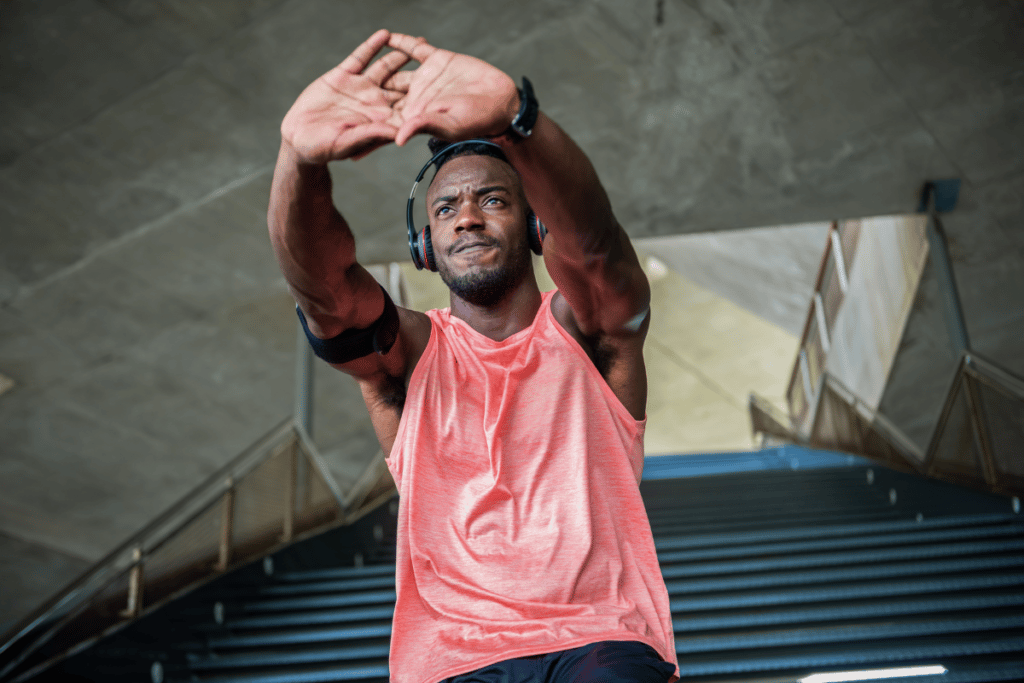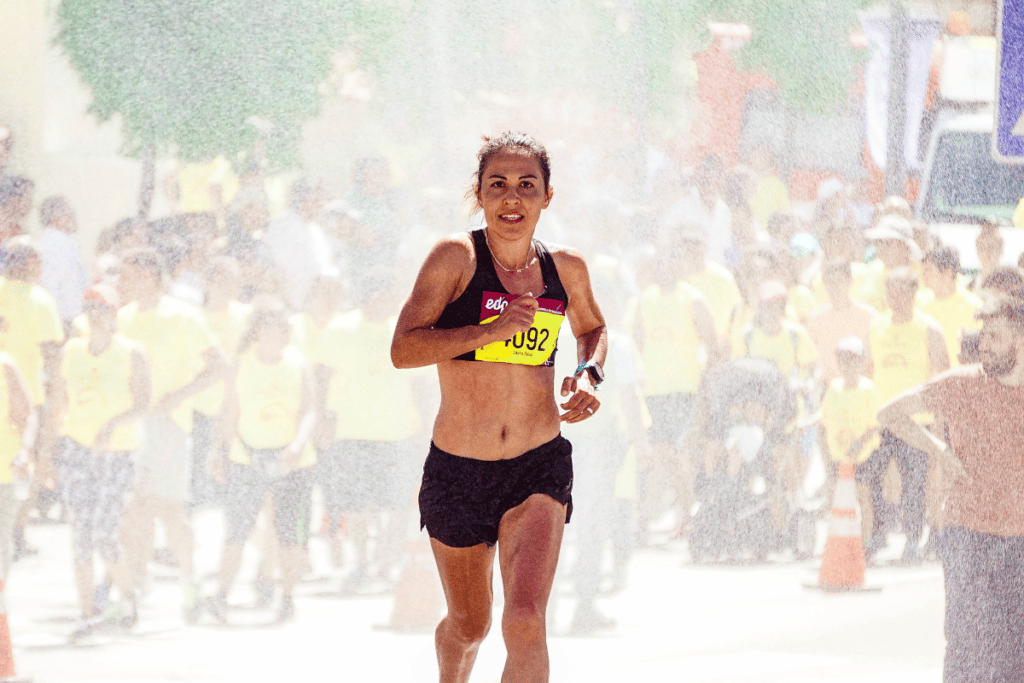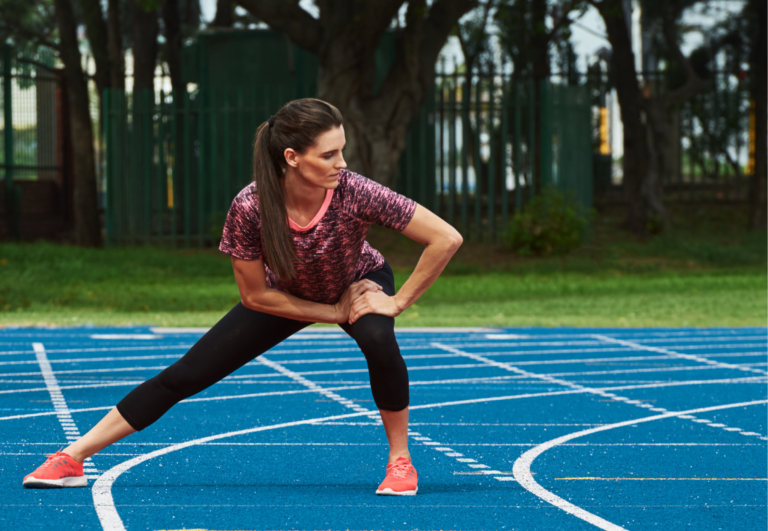Are Runners Weak? (Compared to Other Athletes)
Why is it that the angsty, high school drama films of the 1980s always cast the menacing jock as a member of the school’s football team and not as a member of its cross-country team? If I remember anything from high school, it was that the members of the cross-country team ruled the school… right? No, of course not. Runners have always had a bit of a reputation for being weak, but why is that? Are runners weak compared to other athletes?
Runners may be considered weak if they avoid strength training and only participate in running as a source of exercise. Many professional runners stand at around 5’7” and only weigh around 150 lbs. This seems optimal for long-distance running and may contribute to the idea that runners are weak.
If you’re interested in learning more about this misconception, continue reading below.
Why do runners often look unhealthy or thin?
While runners may appear unhealthy or thin when compared to other athletes, they almost certainly are not. Many casual viewers are likely to see runners like Mo Farah (5’ 7”/130 lbs) or Haile Gebrselassie (5’ 5”/120 lbs) as malnourished or over-exerted because of their extremely lean body type. This, however, is intentional. There is a large body of evidence to suggest that long-distance runners are much more efficient when they stand below 6 feet tall and weigh under 150 lbs.
Here are the heights and weights of the last 3 male Olympic Gold medalist winners in the Marathon for your reference.
| Name, Country (Year) | Height | Weight |
| Eliud Kipchoge, Kenya (2016, 2021) | 5’ 5” | 115 lbs |
| Stephen Kiprotich, Uganda (2012) | 5’ 6” | 123 lbs |
| Samuel Kamau Wanjiru, Kenya (2008) | 5’ 3” | 115 lbs |
As this data suggests, there is a very specific height and weight that is optimal for long-distance running performance. One of the features of this body type is an extremely thin, lean frame. This does not mean runners are unhealthy or even weak, it just means they will have to carry much less body fat than other athletes to be as efficient as possible.
Can a runner be muscular?

Anyone who has watched professional runners compete on television or in person will know that though runners are often light, they are extremely muscular.
In fact, runners will usually have a lower body fat percentage than other athletes, and a higher ratio of muscle per unit of body mass. This is because distance running requires lean muscle, while other sports require more explosive, fast-twitch muscles.
Runners carrying around excess fat are forced to carry that additional weight with each stride they take. The most efficient runners, therefore, carry as little fat as possible. For this reason, a lower body mass index (BMI) strongly predicts higher performance. This means that the weight runners carry is typically made up mostly of muscle.
However, the muscle they tend to carry is lean, which will not look as impressive as over-inflated athletes that carry around higher fat content around their muscles. This, of course, does not mean runners are not muscular. Still, it does produce a vastly different physique than football or rugby athletes since, in these sports, it is generally seen as beneficial to carry around a higher percentage of body fat.
Can runners be strong?
Of course, since runners carry around a higher percentage of muscle per unit of body weight, they can be quite strong. Still, there may be limits to the amount of strength a person seriously committed to running will want to acquire. Obviously, building muscle mass that negatively impacts flexibility and range of motion will have a slowing effect on running performance.
However, some evidence suggests that muscle mass doesn’t necessarily have to have a negative impact on running times, so long as it is done conservatively and in concert with a training routine that involves the same amount of running that would be done otherwise.
The answer to this question really depends on what you mean by “strong.” Running itself can help build muscle to some degree, and a person who runs consistently will likely possess more overall strength than someone who does not exercise at all. However, most serious runners won’t be winning any national bench press competitions!
Should runners also train for muscle strength and size?

While strength training, if done properly, can benefit long and middle-distance running times, training for muscle size (i.e. body-building) is typically considered counterproductive for runners. If you want to incorporate strength training into your training routine to improve long-distance running times, there are ways it can be done that can mitigate the negative impacts of excessive muscle growth and emphasize the positive aspects of improved overall strength.
There is evidence to suggest that resistance exercise and plyometric movements, practiced 2-3 times per week over the course of 8-12 weeks, can improve middle to long-distance running times. This makes sense because the amount of force that a runner is able to exert with each stride will positively correlate to improved times. Athletes will just want to be sure not to increase muscle mass to a degree that impedes range of motion.
4 tips for runners that want to have a more balanced physique
If you don’t plan on training to win the Boston Marathon and simply enjoy running as a form of cardiovascular exercise or a hobby, then you might want to mix up your training regimen to build a more balanced physique. The following tips should help you build a framework for achieving that goal.
- Introduce Static, Weighted-Resistance Movements Into Your Training
- Mix Up Your Cardio By Adding Dynamic, Explosive Movements
- Eat More Proteins and Fats
- Build More Rest Into Your Routine
Introduce Static, Weighted-Resistance Movements Into Your Training
Introducing static, weighted-resistance movements into your training can isolate specific muscle groups and help them develop in ways that a total body exercise, such as running, cannot.
Strength resistance training actually provides a host of surprising health benefits, including but not limited to: improved strength, joint stability, maintaining flexibility and balance, weight management, reduction in the rate of cognitive decline, and increased bone density. Obviously, in addition to all this, isolating specific muscle groups for training will help grow and shape muscles that help with physique and overall attractiveness/appearance.
Mix Up Your Cardio By Adding Dynamic, Explosive Movements

The types of muscle groups developed by activities such as long-distance running differ from the muscles that athletes who participate in dynamic, explosive movements develop. Athletes competing in sports like football or soccer will develop muscle through both aerobic and anaerobic exercise, while runners will develop muscle mostly through aerobic exercise.
Because of this, runners will develop leaner muscles that lend themselves to long, sustained movements that occur at a low to medium level of intensity. However, the other group of athletes will develop muscles that allow maximum acceleration, quick lateral movement, and explosiveness operating at the highest intensity. By adding in plyometric movements like frog hops, power skips, or A-skips, you can develop more fast-twitch, explosive muscles. This provides the best results when paired with Olympic weightlifting movements such as squats, power cleans, or deadlifts.
Eat More Proteins and Fats
Adding proteins and healthy fats into your diet while reducing carbohydrate intake will give your muscles more fuel to grow and develop. An increase in protein dosage has a direct, positive correlation with an increase in muscle mass.
In addition, polyunsaturated fats, such as those found in fish, avocados, olive oil, etc., are crucial for building cell membranes and nerve coverings. They are also necessary for blood clotting, the movement of muscle tissue, and inflammation reduction. Adding these two elements to your diet will help you add muscle and maintain a more balanced physique.
Build More Rest Into Your Routine
When training for highly competitive, long-distance running activities, the amount of daily calories burned can be astonishing. Time spent at the dinner table becomes a race to refuel the body before the next ultra-calorie-burning event.
If you aren’t a serious runner who plans to compete in extreme running events, you might want to build a little more rest into your schedule. This can improve muscle building, decrease the risk of injury, and allow more time for your body to catch up with its caloric intake.
This is extremely necessary if your goal is to avoid the ultra-lean body type that most disciplined runners have.






